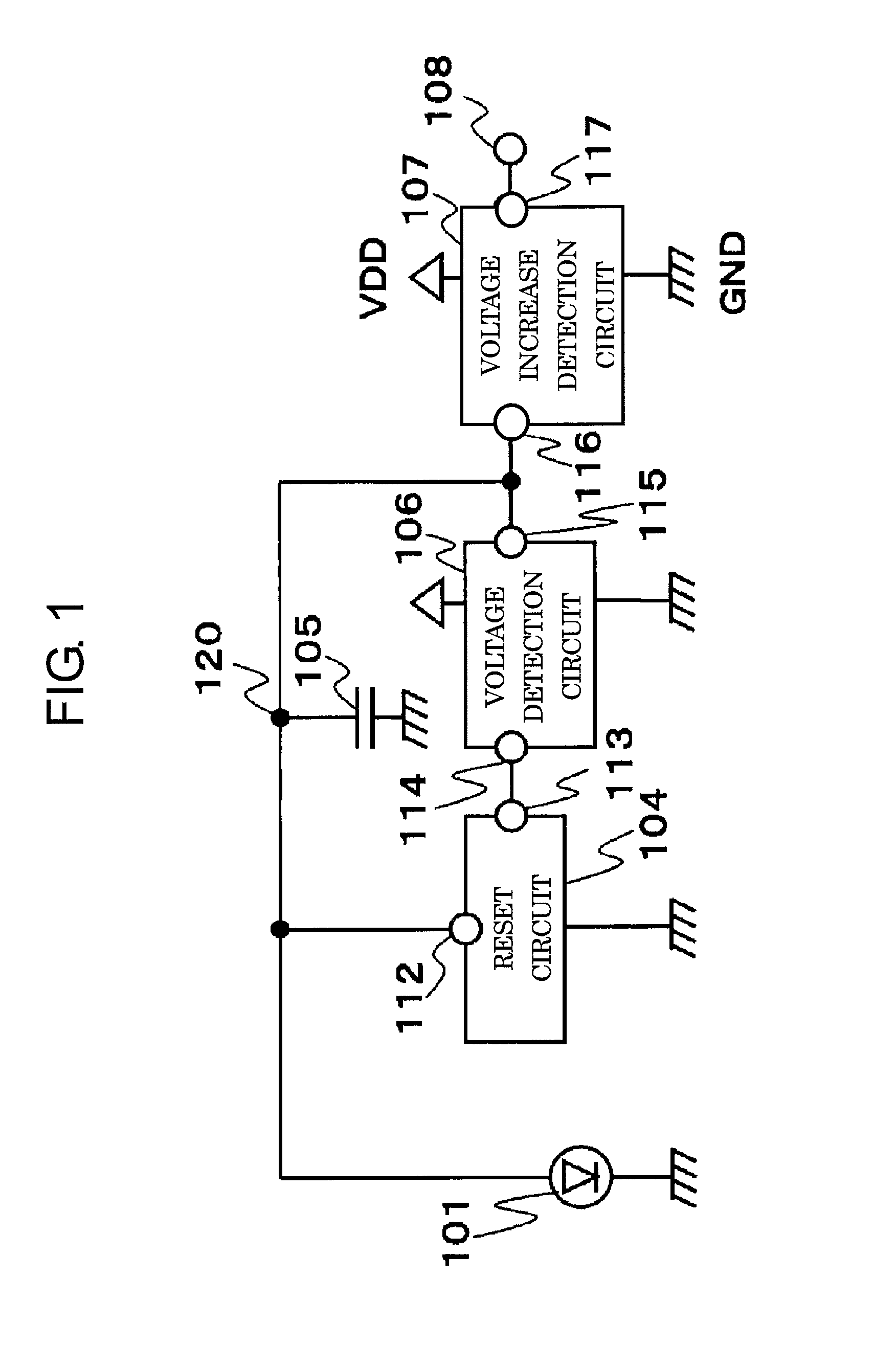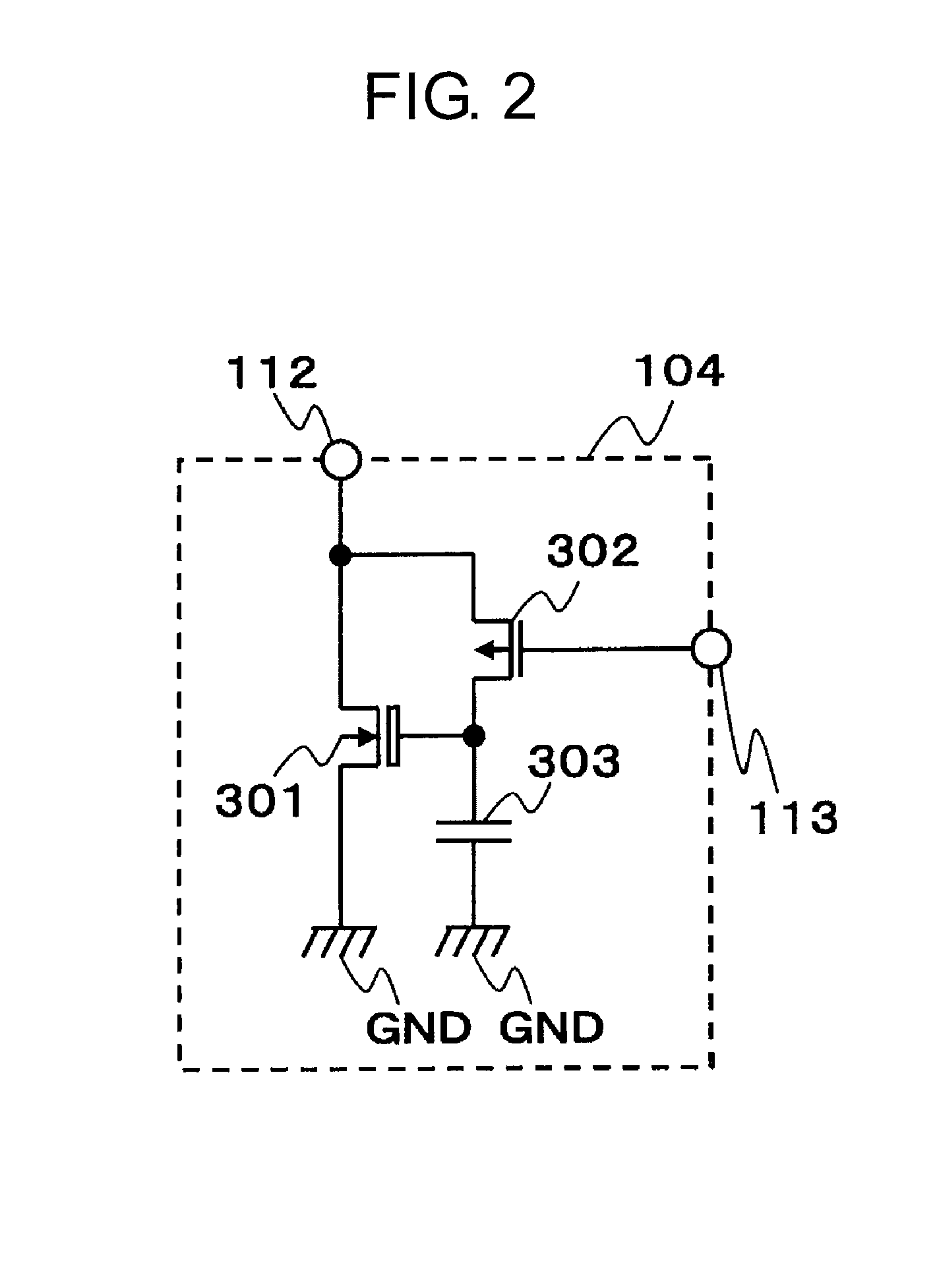Light receiving circuit
a light receiving circuit and light technology, applied in the direction of pulse technique, pulse input and output pulse circuit, instant pulse delivery arrangement, etc., can solve the problem of low sensitivity of the related-art light receiving circuit, the voltage increase rate is decreasing, etc., to achieve low current consumption, low cost, and high sensitivity
- Summary
- Abstract
- Description
- Claims
- Application Information
AI Technical Summary
Benefits of technology
Problems solved by technology
Method used
Image
Examples
Embodiment Construction
[0021]FIG. 1 is a block diagram illustrating a light receiving circuit according to an embodiment of the present invention.
[0022]The light receiving circuit according to this embodiment includes a photodiode 101, a reset circuit 104, a capacitor 105, a voltage detection circuit 106, and a voltage increase detection circuit 107.
[0023]The photodiode 101 has an N-type terminal connected to a GND terminal and a P-type terminal connected to a node 120. The reset circuit 104 has a reset terminal 112 connected to the node 120 and an input terminal 113 connected to an output terminal 114 of the voltage detection circuit 106. The capacitor 105 has one terminal connected to the node 120 and the other terminal connected to the GND terminal. The voltage detection circuit 106 has an input terminal 115 connected to the node 120. The voltage increase detection circuit 107 has an input terminal 116 connected to the node 120 and an output terminal 117 connected to an output terminal 108.
[0024]The ph...
PUM
 Login to View More
Login to View More Abstract
Description
Claims
Application Information
 Login to View More
Login to View More - R&D
- Intellectual Property
- Life Sciences
- Materials
- Tech Scout
- Unparalleled Data Quality
- Higher Quality Content
- 60% Fewer Hallucinations
Browse by: Latest US Patents, China's latest patents, Technical Efficacy Thesaurus, Application Domain, Technology Topic, Popular Technical Reports.
© 2025 PatSnap. All rights reserved.Legal|Privacy policy|Modern Slavery Act Transparency Statement|Sitemap|About US| Contact US: help@patsnap.com



